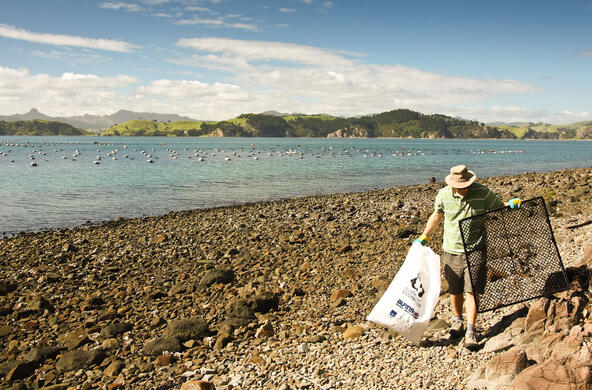Combining art and science may seem like a new idea, but the two are intrinsically interlinked and are complementary. Natural pigmentation can be a learning tool for studying science. Extracting natural pigments from soils and rocks were familiar to indigenous and prehistoric peoples and provided the colors for such extraordinary cave paintings as those in the Lascaux caves in Dordogne, France.
For the last two weeks of July, young people from around the Hudson Valley were able to make their own inks and tints and paint with them in an eco-science camp at the Cary Institute. They were then able to present the results of their own scientific research about the Wappingers Creek to the community at the Farmer's Market in Millbrook.
After two days of orientation, canoeing down the river, stream monitoring and testing for contaminants, the students started finding and grinding pigments from stones in the stream bed for their water color paintings. They used stems from common reeds and phragmites as styluses. And they started to ask important questions such as: "Do contaminants in the stream cause the rocks to be different colors?" along with other important questions.
Some of the students had not realized that pharmaceuticals and microplastics are deposited into the streams due to human usage.

They were able to create a powder of pigment by grinding rocks from the creek-bed against one another. Reddish brown tones are found where iron is in the rock, greenish tones come from copper and grey can come from woodash, soils and muds create ochre and other brown shades. Berries and leaves provide still other opportunities. Studying these variations in nature provide opportunities for studying the effects of chemicals on pigmentation.
Following two days of orientation to the science of stream monitoring and contaminant testing, the campers were led by artist-educators Laurie Seeman and George Kaye in two successive mornings of play-like activity by the creek and in the studio.
This included grinding pigments from stones in the stream bed for use in watercolor drawings; testing wetland plants such as common reed (Phragmites) and skunk cabbage (Symplocarpus foetidus) for application as styluses, pigment sources and sculptural materials. More questions arose such as: "Why are some parts of the river deeper than others?". "Why do the invertebrate communities differ in each stream?". "Do contaminants (in the water) cause rocks to make color?".

The young people were able to develop a better sense of the stream as a living ecosystem that is connected to the landscape around it and the fact that people are interconnected to that landscape in a complex way.
Laurie Seeman and George Kaye were facilitators in the art-science camp. George explained that integrating art and science is important because it supports young people learning and thinking about the processes and complexity of nature.
"Making art in or from nature forces you to slow down and really pay attention to the details, and you often notice things that you hadn't seen before. During the camp, students were challenged to use art to depict nature, and to explore how they viewed the world around them in a completely new way," said Cary Institute Education Program Leader, Cornelia Harris.
All the drawings, questions and related specimens were brought together in a large mural that was exhibited at the Millbrook farmer's market last weekend, where addresses for safe pharmaceutical disposal stations in the area were distributed along with information about Cary's EarthWise podcasts.



